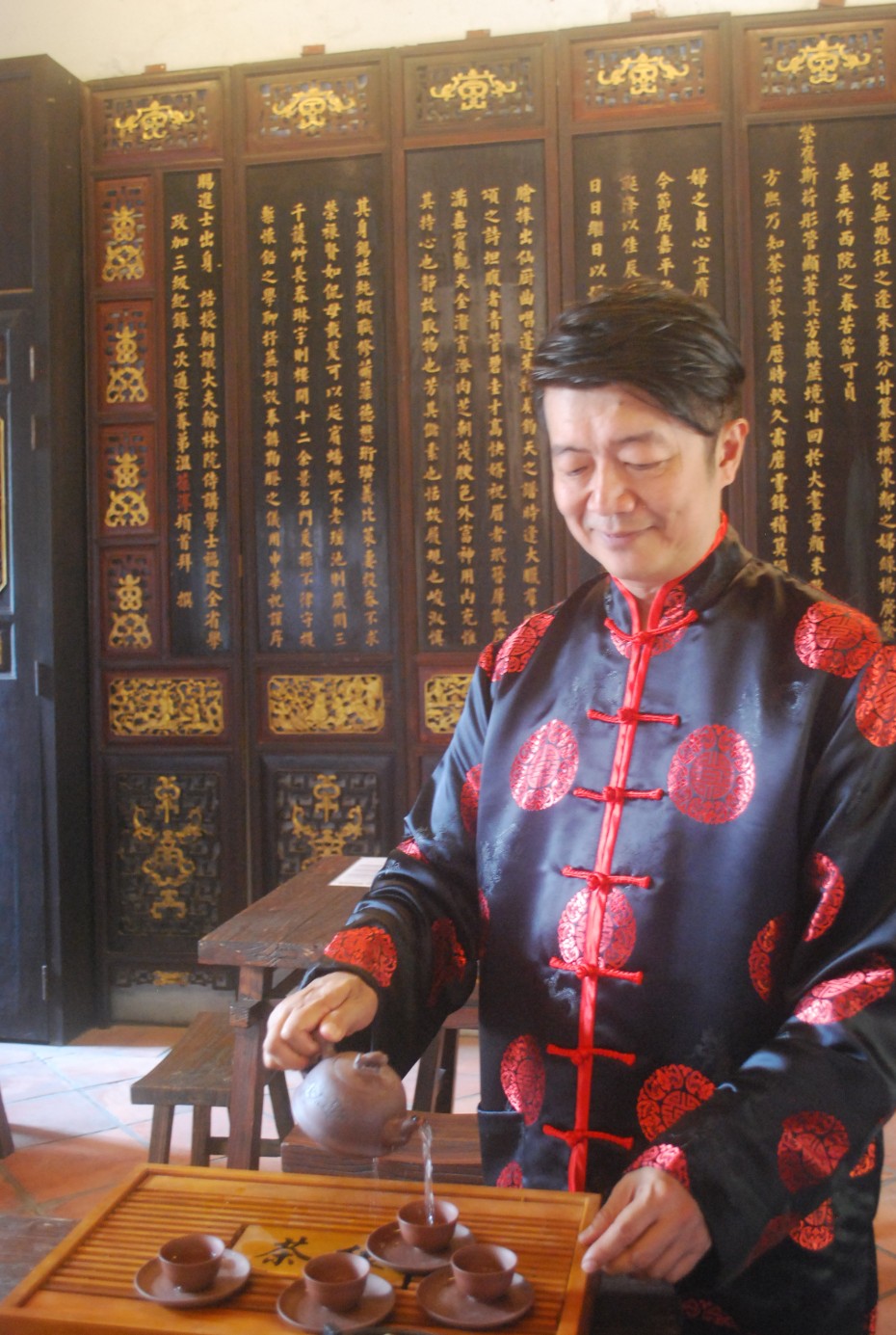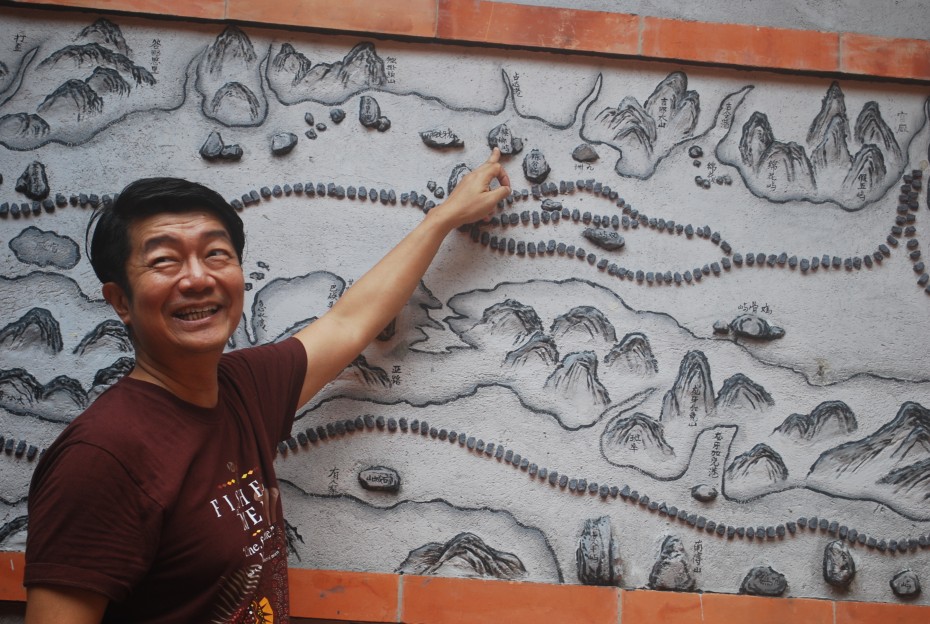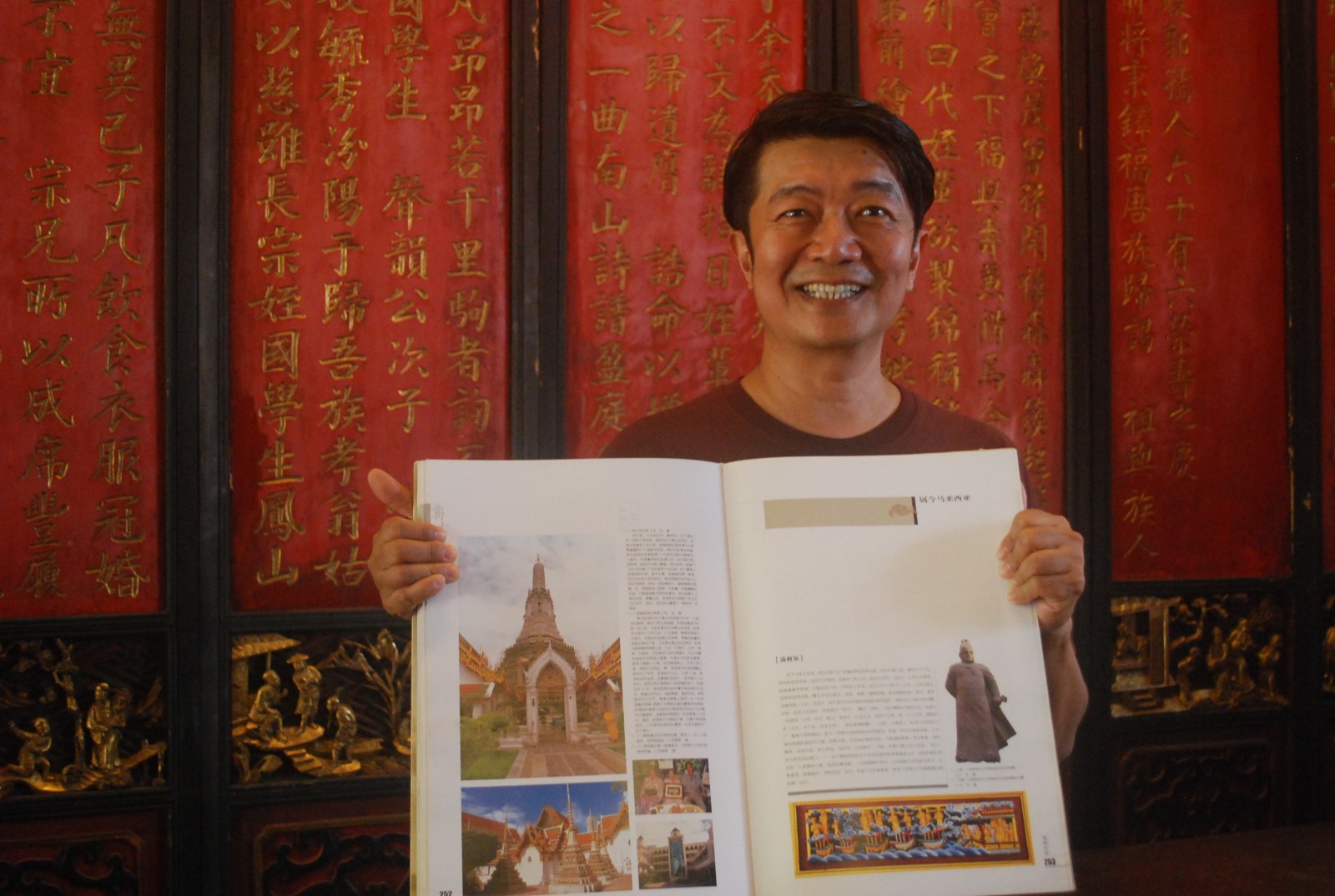IMAGINE finding and walking through a secret tunnel in Malacca, and being transported back to the days of Admiral Cheng Ho. That’s the experience Cheng Ho Cultural Museum assistant general manager Kok Kee Boon hopes to create.

Past preserved: The Cheng Ho Tea House on Jalan Tukang Besi contains historical artifacts such as this shrine to Mazu, the Chinese goddess of the sea.
The idea came about after Kok found a sealed-up doorway hidden behind a huge cabinet at the former home of Kapitan Lee Wei King, the leader of the Chinese people during the Dutch colonisation of Malacca. He was overseeing restoration works on the house, located on Jalan Tukang Besi, which would see it transformed into the recently opened Cheng Ho Tea House.
“We drilled a small hole through the doorway and realised it was connected to 1673 (a cafe/bistro on the neighbouring Jalan Hang Jebat, aka Jonker Street)!” said Kok.
“We avoided breaking down the wall at the time as it was the Chinese Hungry Ghost Festival, but that’s when we had the idea of turning it into a ‘time tunnel.’
“We wanted visitors to walk from the hustle and bustle of Jonker, through a modern cafe, past the doorway, and step in here, where everything is made to look and feel like an actual Ming Dynasty tea house.”

Kok Kee Boon, assistant general manager of the Cheng Ho Cultural museum, wanted the Cheng Ho Tea House to look and feel like an actual Ming dynasty tea house.
While the tunnel is slated for completion sometime at the end of the year, the Cheng Ho Tea House is already open to the public, and visitors can drop by to have a meal, have a look at the historical artifacts on display and, of course, have steaming cups of Pu Erh tea imported from a plantation in Yunnan province, China, the birthplace of Cheng Ho.
“The wonderful thing about (the tea house) is that we are not a Hollywood movie set – these are actual relics,” said Kok enthusiastically, while showing us a statue of Mazu (the Chinese goddess of the sea), which he said was centuries old.
The architecture of the tea house is also something to behold, as Kok and the people behind the restoration have painstakingly preserved as much of the building’s original features as possible, including Lee’s bed frame and shrine to Mazu.
In the central courtyard, there is a floor-to-ceiling map detailing Cheng Ho’s voyage, which began in China in 1405 and ended 29 years later in Africa, where he picked up a giraffe to present to his emperor. Malacca is indicated on that map, as one of the stops on his epic, decades-long journey.

A map at the Cheng Ho Tea House detailing the route Cheng Ho took to get from China to Africa. He made at least five stops in Malacca during the journey.
But this level of historical accuracy does not come easy – or cheap. “We spent RM100,000 renovating the tunnel and the tea house,” said Kok, adding that an additional RM100,000 was spent developing cultural shows and performances to add to the cultural experience.
“I want to bring the culture to life, instead of just having displays,” he said. “I started with a Chinese cultural show, because I thought it fit with the building’s Ming Dynasty look. I had Shaolin monks, acrobats and Sichuan bian lian (mask-changing) performers.
“But after a while, the tourists said they preferred to see something local, so I created a Baba Nyonya wedding show which is now very popular.”
Heritage hero
Even as a child, Kok had been fascinated with the legend of Cheng Ho. “I loved all the stories about Cheng Ho and other explorers, so getting to work on this project and learn more about the man has been very exciting.”
Cheng Ho was a Chinese admiral who came to Malacca in 1406 on a diplomatic mission on behalf of Emperor Yong Le, the third emperor of the Ming Dynasty who ruled during the dynasty’s golden age.
He was entrusted with creating diplomatic ties with the ruler of Malacca, while displaying the might of the dynasty, and his adventures have spawned fantastical tales, many of which inspired Kok’s imagination as a child.
Kok, who is based in Kuala Lumpur and is also a musician, got involved in the tea house project four years ago after a visit to the Cheng Ho Cultural Museum, which owns the tea house. He immediately fell in love with the place, and he now travels back and forth between Malacca and KL.
But being in heritage conservation comes with its share of challenges. “In Malaysia, there is a great need to make this sustainable. I am really fighting a losing battle as the government does not really fund projects like these.”
Despite the difficulties, Kok hopes to continue building up the cultural arts scene in Malacca into “something viable and sustainable – something everyone can be a part of.”



Tell us what you think!